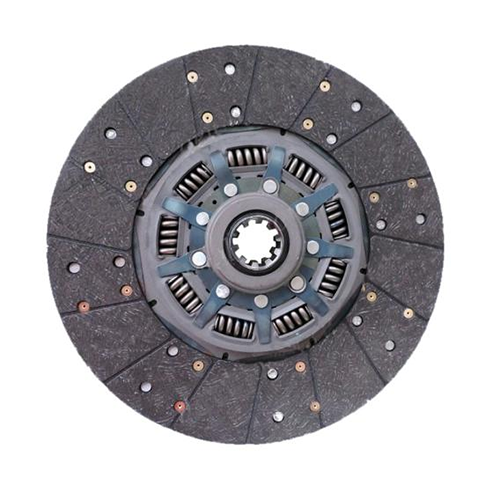Introduction to Clutch Pressure Plates
Many different components inside heavy-duty vehicles comprising trucks and construction equipment combine to ensure their peak operational success. A clutch pressure plate operates as one of the essential components in heavy-duty vehicles because of its vital role. The basic yet advanced pressure plate contributes crucially to transmission functionality because it controls power transfer across the engine to wheel movement. The examination of clutch pressure plate functions and vital characteristics in heavy-duty vehicles makes clear its absolute necessity in vehicle operations.
The Function of a Clutch Pressure Plate
The main role of clutch pressure plates by Yichun Marke must first be recognized to understand their critical nature. The clutch pressure plate stands as an integral element of the clutch system that operates within a manual transmission vehicle. Through a pressure mechanism the pressure plate engages the clutch disc with the flywheel that connects to the crankshaft of the engine. This action facilitates the transfer of torque from the engine to the transmission. The clutch pedal compression activates the pressure plate to separate the clutch disc from the flywheel therefore stopping power transfer until the driver finishes gear shifting. The power transfer efficiency and gear shifting performance heavily depend on the function of the clutch pressure plate.
Durability and Strength in Heavy-Duty Applications
Heavy-duty vehicles bear harsh operational conditions by management heavy loads alongside difficult road conditions. Heavy conditions demand strong components because operators need parts able to handle intensive stress and consistently continue working. The clutch pressure plate used in heavy-duty vehicles undergoes special design to fulfill demanding operational needs. Manufacturers build pressure plates for heavy-duty vehicles using high-quality heat-resistant materials that include cast iron and carbon composites because these materials withstand intense temperatures and ongoing operational friction. These durable pressure plates maintain continuous functionality while decreasing likelihood of mechanical breakdowns since they operate in heavy-duty environments.
Impact on Vehicle Performance
A heavy-duty vehicle functionally depends on how well its transmission system operates and works efficiently. An appropriate maintenance of the clutch pressure plate enables smooth gear transitions for improved vehicle performance and driving comfort. A worn or damaged pressure plate will result in vehicle breakdown because of clutch slippage and complete power transmission failure during heavy duty operations. Vehicle maneuverability together with acceleration depends on the direct response capabilities of the pressure plate. Safety together with performance demands proper maintenance of heavy-duty clutch systems at all times.
Maintenance and Replacement
A proper maintenance regimen along with timely replacements of the clutch pressure plate serves as a fundamental requirement to extend both performance and operational lifetime of heavy-duty vehicles. Regular servicing and inspection routines help detect early signs of wear so problems stay minor before turning into vital mechanical malfunctions. The key warning signs of a bad pressure plate are when manual gear shifting becomes challenging and when operating the clutch causes strange sounds and the vehicle generally drives poorly. People must handle any detected symptoms quickly as a response to these symptoms remains essential. The necessity of proactively maintaining heavy-duty vehicles stems from their operating environments which result in substantial breakdown-caused downtime that brings financial consequences.
Technological Advancements
Modern automotive technology has brought numerous advances to clutch systems and the automotive industry continues to develop further. Automotive manufacturers develop modern clutch pressure plates by using improved engineering approaches to make them more durable and productive. Dual-mass flywheels together with self-adjusting clutches serve to minimize wear and extend the operational life of clutch components. Heavy-duty vehicles that adopt advanced technologies gain enhanced performance and decreased maintenance expenses and extended operational period. Organizations that stay current with advancing technologies and apply them to their maintenance procedures gain significant control over the management of heavy-duty vehicles.
Conclusion
Pressure plates in clutches serve as indispensable elements in sustaining proper operation of heavy-duty vehicles. The essential characteristics of clutch pressure plates include their power transfer roles with sturdy performance under intense conditions which demonstrate their vital importance. Regular maintenance together with technological advancement implementation increases both functional capacity and operational duration of heavy-duty vehicles to maintain their reliability and operational efficiency. Operators and fleet managers better understand component value through clutch pressure plate understanding within heavy-duty vehicle operations systems.

 EN
EN AR
AR
 BG
BG
 HR
HR
 CS
CS
 DA
DA
 NL
NL
 FI
FI
 FR
FR
 DE
DE
 EL
EL
 HI
HI
 IT
IT
 JA
JA
 KO
KO
 NO
NO
 PL
PL
 PT
PT
 RO
RO
 RU
RU
 ES
ES
 SV
SV
 CA
CA
 TL
TL
 ID
ID
 LV
LV
 LT
LT
 SR
SR
 UK
UK
 VI
VI
 HU
HU
 TH
TH
 TR
TR
 FA
FA
 AF
AF
 MS
MS
 SW
SW
 GA
GA
 HY
HY
 KK
KK
